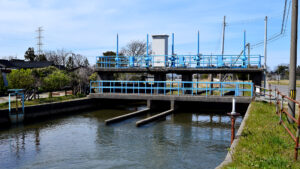Takanori Nagano, Masayasu Irie, John C. Wells
Received 21 February, 2025
Accepted 25 April, 2025
Published online 3 July, 2025
Takanori Nagano1), Masayasu Irie1), John C. Wells2)
1) Civil Engineering, the University of Osaka, Japan
2) Ritsumeikan University, Japan
We developed a machine learning-based system for detecting anomalies and quantifying the reliability of data recorded by an automatic in-situ observation system. Dissolved oxygen measurements in Osaka Bay, a hypoxic estuary in Japan, were decomposed by principal component analysis to reduce the dimensionality, thereby allowing 90% of the variance of the dissolved oxygen to be reconstructed by 10% of the total principal components. Then a gradient decision tree algorithm was applied to predict the principal components of dissolved oxygen, based on explanatory variables including meteorological factors, tide, and river discharge, thereby allowing efficient representation of dissolved oxygen fluctuation cycles with periods ranging from diurnal to annual. To evaluate the performance of the prediction model, cross-validation and comparison with a baseline linear model were conducted. Cross-validation yielded an RMSE of 1.14 mg L–1, as compared to 1.61 mg L–1 for the baseline. Spatially, the data observed at monitoring stations near river mouth were found to have larger errors than those of other coastal sites. This reliability evaluation system enables not only early detection of anomalies in the monitoring observation system, but also objective evaluation of the quality of data used for time-series analysis or data assimilation.
Copyright (c) 2025 The Author(s) CC-BY 4.0










